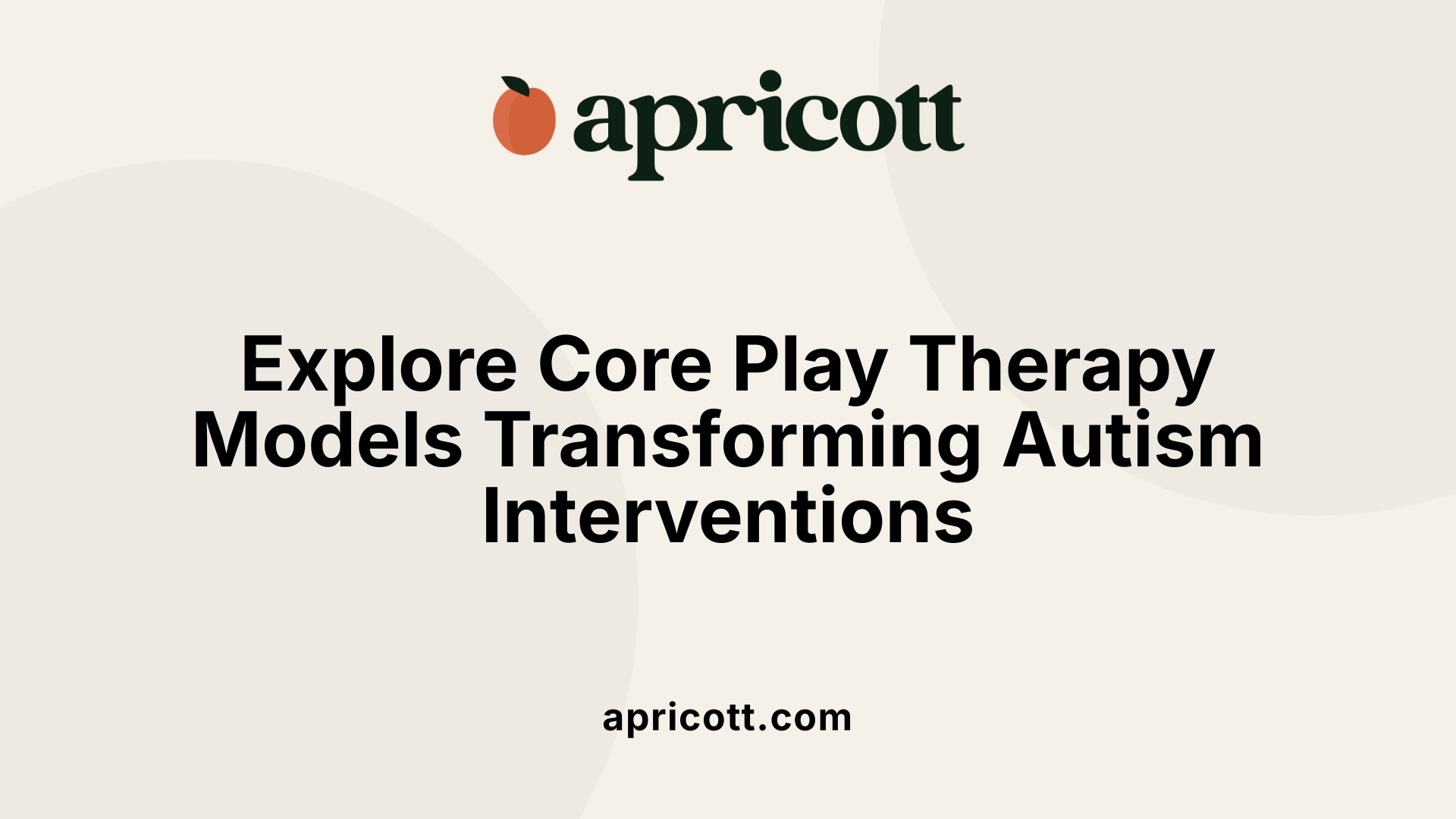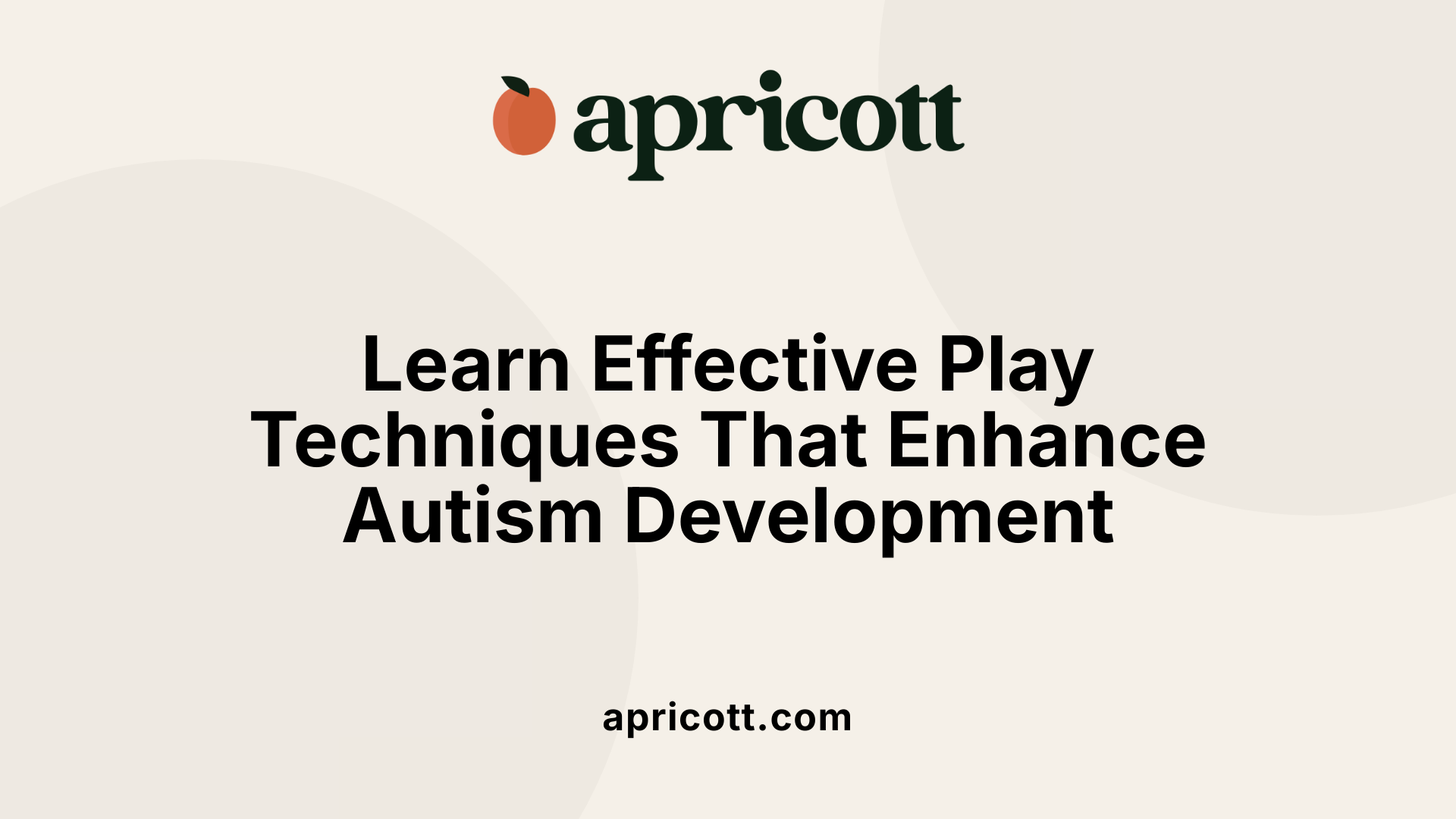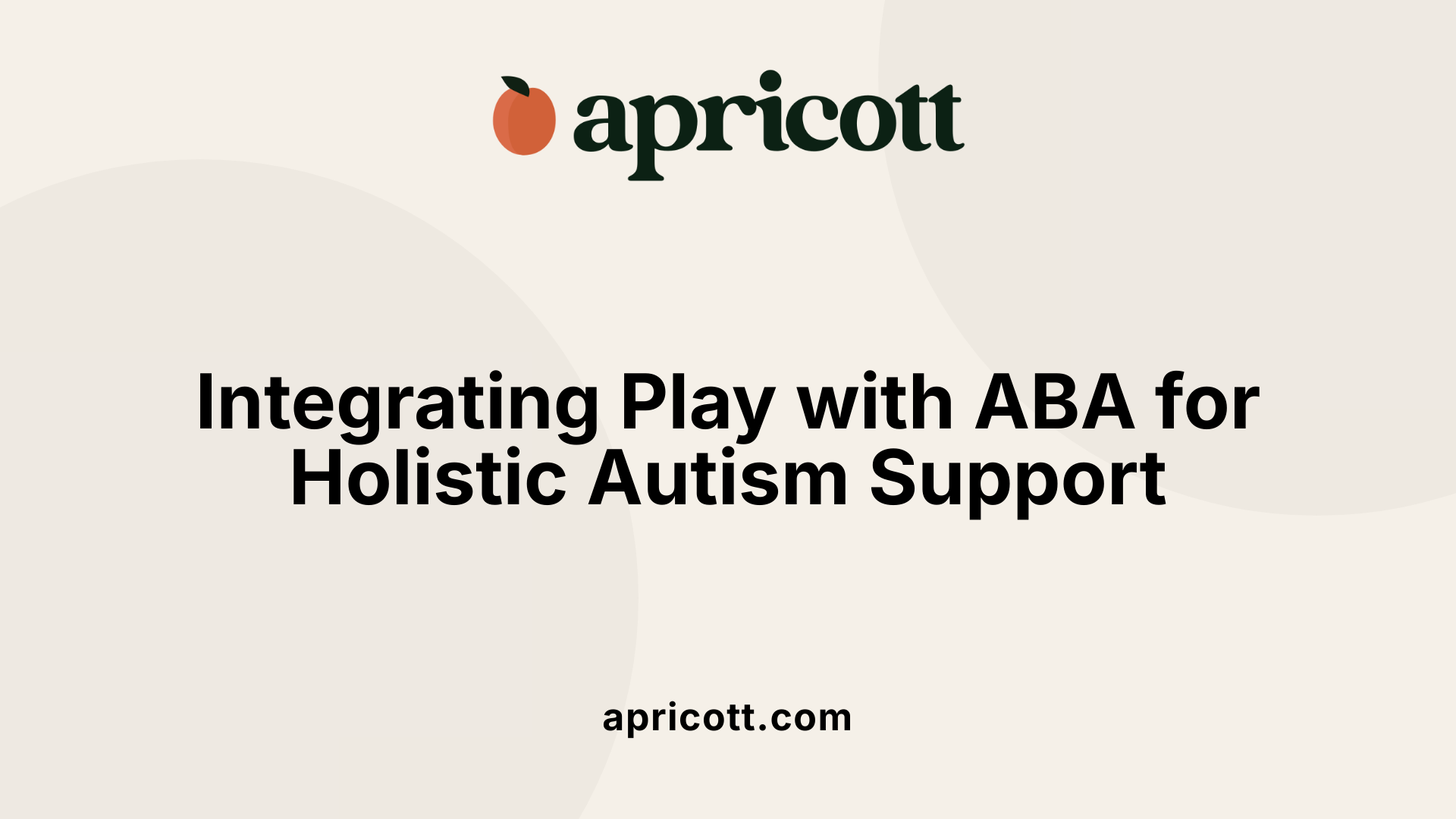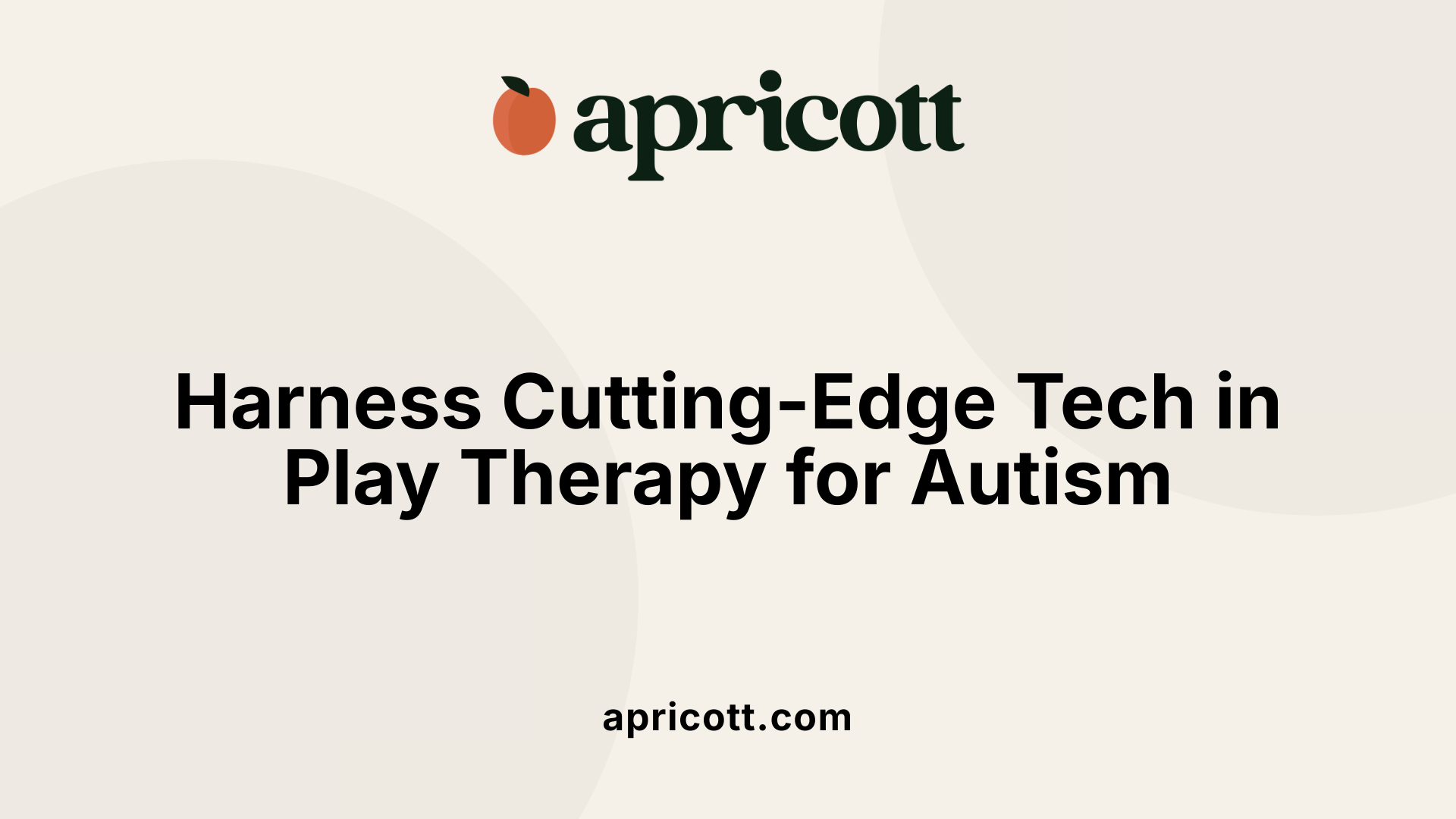December 2, 2025
Unlocking Communication and Growth: The Role of Play Therapy in Autism
Play therapy offers a dynamic and supportive approach for children with autism spectrum disorder (ASD), focusing on their unique ways of communicating and learning through play. This article explores what play therapy entails, its benefits, key models, and how it integrates with modern behavioral approaches such as Applied Behavior Analysis (ABA) to enhance social, emotional, and cognitive development in autistic children.

Play therapy is a therapeutic approach that uses play activities as a natural medium for children to express themselves, communicate, and work through emotional or developmental challenges. It provides a safe and structured environment where children, especially those with autism, can develop various skills through activities tailored to their needs.
Play is fundamental in childhood development. It nurtures social skills, language, creativity, self-esteem, and emotional regulation. For children with autism, play serves as a bridge to improve communication and social interaction, areas often affected by the disorder.
Play therapy helps children with autism enhance communication abilities, emotional expression, social interaction, and coping strategies. It can lead to improved relationships, increased self-esteem, and better emotional regulation. Many children experience growth in symbolic play and develop resilience, all within a supportive and inclusive setting.
Therapeutic play can include pretend play, sensory activities, role-playing, and art. These activities not only reflect children's interests but also target specific developmental goals. For example, sensory play helps with emotional regulation, while role-playing fosters social skills and communication.
Play therapy environments are designed to be fun, safe, and inclusive, promoting kindness and understanding. Approaches vary from child-led (non-directive) therapy, where children explore freely, to directive therapy where therapists guide play to meet specific objectives. Group or individual sessions can be used depending on the child’s needs, ensuring tailored support.

The Integrated Play Group model is a play-based approach designed to aid children with autism in developing social and symbolic play skills. It draws directly from Vygotsky's social constructivist theory, emphasizing the importance of social interaction and guided participation for learning. In practice, IPG arranges physical play environments where children with autism play alongside expert peers and are supported by adult guides.
Based on Vygotsky's ideas, the IPG model highlights learning through social connections. Children with autism are encouraged to lead play, but adults and peers gradually reduce support as the child acquires independent skills. This environment promotes exploration and skill development based on relationships and collaborative play.
Developed by Stanley Greenspan, the Floor Time model centers on building emotional connections through child-led play. It includes five important steps:
These steps foster affective engagement, which stimulates cognitive and emotional growth in children with autism.
In both IPG and Floor Time, adult guides facilitate play by creating supportive settings. In IPG, adult guides and expert peers help scaffold social and symbolic play activities. Similarly, in Floor Time, adults join the child's play without controlling it, fostering mutual emotional engagement.
Both models encourage indirect learning by enabling children to initiate interactions in a supportive atmosphere. This child-centered approach helps improve social skills, symbolic play, and emotional understanding, providing children with autism the opportunity to develop relationships on their own terms.

Play therapy for children with autism commonly includes pretend play, sensory play, and art activities. These forms of play offer children a natural and engaging way to communicate and express themselves. Pretend play encourages symbolic thinking and social interaction, sensory play helps address sensory processing challenges, while art activities provide a nonverbal outlet for emotions and creativity.
Play therapy utilizes both child-initiated and adult-guided approaches. Child-initiated play allows children with autism to lead interactions at their own pace, fostering autonomy and emotional expression. Conversely, adult-guided play gently supports and expands play themes to encourage social and communication skills. Models like the Integrated Play Group (IPG) use a fading support approach where adults initially guide play and gradually step back as children gain competence.
Research shows that interventions such as IPG lead to increased functional and symbolic use of objects and enhanced social play in children with autism. These improvements are evident in both structured sessions and natural settings. Play therapy promotes turn-taking, collaborative play, and the development of symbolic roles and narratives, which are often challenging areas for these children.
Play therapy provides a safe, structured environment where children can express feelings and work through challenges nonverbally. Activities like sensory play and art enable emotional release and help develop coping strategies. Models such as Floor Time emphasize affective engagement and mutual communication, fostering emotional regulation and self-confidence.
Studies on play-based interventions report significant developmental gains in children with autism, including enhanced social behavior, communication, cognitive skills, and creative play. For example, children undergoing Floor Time therapy for at least two years often show marked progress, with many achieving substantial improvements in emotional and social domains.
| Technique | Description | Observed Benefits |
|---|---|---|
| Pretend Play | Engaging in symbolic and imaginative scenarios | Enhances social interaction, creativity |
| Sensory Play | Stimulating sensory experiences | Improves emotional regulation, sensory integration |
| Art Activities | Drawing, painting, and crafting | Facilitates self-expression and emotional processing |
| Child-Initiated Play | Child leads play activities | Encourages autonomy, emotional confidence |
| Adult-Guided Play | Adult supports and structures play | Promotes social and symbolic skill development |

Applied Behavior Analysis (ABA) is a science-based therapeutic approach primarily used to support individuals with autism spectrum disorders. It focuses on understanding and modifying behaviors by using strategies such as positive reinforcement, prompting, and systematic skill-building activities. The overarching goal of ABA is to enhance beneficial behaviors, including communication, social skills, and independence, while reducing behaviors that may interfere with learning or social interaction. Treatment plans are highly individualized, with assessments guiding tailored interventions.
ABA therapy is delivered by a specialized team of professionals trained in behavioral sciences and developmental conditions. This team commonly includes Board Certified Behavior Analysts (BCBAs), who design and oversee intervention programs, and Registered Behavior Technicians (RBTs), who implement therapy sessions under supervision. These providers have extensive training in behavioral analysis, autism characteristics, and evidence-based methods to ensure effective support. Families typically access ABA services through healthcare providers, support networks, or professional listings that verify qualifications and licensure.
Play serves as a valuable medium in ABA therapy, promoting engagement and learning through natural interactions. Therapists incorporate play-based techniques to teach communication, social interaction, and adaptive skills in enjoyable and motivating contexts. These methods leverage children's natural inclination for play to foster skill acquisition, making therapy more child-centered and fun.
Various play types are integrated within ABA practices:
Each type of play addresses different developmental needs and supports comprehensive skill growth.
Play not only facilitates learning but also acts as an essential motivational tool within ABA sessions. Therapists use play activities to assess a child’s current abilities and interests, enabling real-time data collection on progress and challenging behaviors. This approach helps in tailoring intervention strategies to the child's preferences and strengths. Additionally, engaging in play increases motivation, making children more receptive to learning and skill development.

Innovative technologies like virtual reality (VR) and augmented reality (AR) are increasingly integrated into play therapy to create engaging and immersive learning environments. These tools enable children with autism to explore social scenarios and practice communication skills in safe, controlled settings, enhancing both engagement and skill acquisition.
Interactive educational apps provide accessible platforms for children to develop communication, cognitive, and social skills through play. These digital tools often offer customizable content to match individual therapy goals, allowing for personalized learning experiences that promote motivation and consistent practice.
Gamification introduces game-like elements such as rewards and challenges into therapy activities, increasing motivation and enjoyment. Meanwhile, wearable devices can support daily activities by monitoring behavior or prompting social interactions, enabling real-time feedback and encouraging the generalization of skills outside therapy sessions.
By incorporating technology, play therapy becomes more appealing, interactive, and adaptable to diverse learning styles. This helps sustain children's attention and fosters greater participation. Additionally, technological tools can bridge geographical and physical barriers, increasing access to therapy for a wider population.
Future developments are likely to expand on current tech integration through advanced gamified platforms, improved VR/AR experiences, and sophisticated wearable sensors. These innovations aim to further personalize therapy, enhance motivation, and support everyday functioning for children with autism.
| Technology Type | Purpose | Impact on Therapy |
|---|---|---|
| Virtual Reality (VR) | Immersive social skill practice | Safe skill development, higher engagement |
| Augmented Reality (AR) | Interactive layered learning | Contextualized experiences, real-world links |
| Educational Apps | Cognitive and social skill building | Personalized, accessible, and motivating |
| Gamification | Introducing game elements | Increased motivation and sustained participation |
| Wearable Technology | Monitoring and prompting social interactions | Real-time feedback, supports skill generalization |
Integrating play therapy into daily home routines is an effective way to support children with autism. Parents can incorporate sensory play activities, such as using textured toys or water play, to enhance sensory processing. Role-playing games help children practice social scenarios and communication in a natural context. These approaches are simple to implement and make therapy consistent beyond clinical sessions.
Parents and caregivers play a vital role in reinforcing therapy goals by creating a play-friendly environment at home. This involves selecting play materials that encourage communication, social interaction, and problem-solving. Engaging in child-led play sessions allows children to explore skills independently, with adults providing gentle guidance as needed. Embedding ABA therapy objectives into everyday activities can increase motivation and skill generalization.
Play-based interventions contribute to holistic development by fostering physical coordination through active play and fine motor skills activities. Cognitive gains arise from symbolic and pretend play, which stimulate imagination and language use. Emotional growth is supported as children express feelings, develop self-regulation, and build self-esteem through successful play experiences.
Through guided play, children learn coping strategies and how to navigate social challenges, enhancing resilience. Interactive play with peers, modeled in approaches like Integrated Play Groups, cultivates social skills and relationship-building. Play therapy encourages children to communicate emotions and negotiate social cues, which can improve peer engagement and reduce anxiety.
A foundational element of play therapy at home is fostering an inclusive and kind atmosphere. This environment welcomes self-expression without judgment, promotes understanding, and supports children’s individual needs. Such settings empower children to experiment with new skills confidently and nurture positive social interactions.
| Aspect | Examples | Benefits |
|---|---|---|
| Sensory Play | Textured toys, water play | Enhances sensory processing and attention |
| Role Playing | Social scenarios, storytelling | Builds communication and social skills |
| Environment Setup | Play-friendly space, diverse toys | Encourages exploration and independence |
| Emotional Regulation Techniques | Turn-taking, emotion cards | Supports coping and emotional expression |
| Peer Interaction Opportunities | Group play, guided peer games | Improves social skills and friendship building |
Play therapy stands as a vital, child-centered approach that leverages the natural language of play to foster meaningful growth in children with autism. By encouraging self-expression, social interaction, and emotional regulation within supportive settings—whether through established models like Integrated Play Groups and Floor Time or as part of evidence-based ABA programs—play therapy offers diverse pathways for development. As technological innovations and home-based strategies expand its reach, play therapy continues to evolve, empowering children with autism to engage, learn, and build resilient relationships on their own terms.